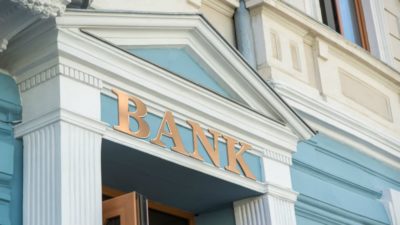The COVID-19 crisis has ravaged the retail, energy, and real estate sectors. Canadians might be wondering how exposed the Big Five banks are to these sectors, given the Big Five’s importance to the Canadian economy. Below are the weightings of each sector in each bank’s business and government loan portfolio.
| TD | RBC | CIBC | BMO | BNS | |
| Retail | 4% | – | 3% | 9% | 12% |
| Energy | 4% | 2% | 5% | 5% | 7% |
| Real Estate | 27% | 16% | 20% | 15% | 14% |
These are approximations, as each bank breaks out sectors slightly differently. In one case, retail was not listed as a sector. All percentages are derived from 2019 annual reports.
Toronto-Dominion Bank was the only bank to include a separate sector breakdown for its non-Canadian business and government loan portfolio in its 2019 annual report. TD’s global business and government loan portfolio totals approximately $252 billion. The retail, energy, and real estate sector exposure is almost identical in Canada and the U.S., collectively representing about $44 billion of loans in Canada and $43 billion in the United States.
TD’s largest client sector, globally, in its business and government loan portfolio is real estate, comprising about $69 billion of loans to real estate businesses in Canada and the United States.
Royal Bank of Canada has a business and government loan portfolio of $371 billion. Its largest client sector is government clients, who represent over $105 billion, or 28%, of the portfolio. RBC also has $61 billion in loans to real estate companies.
RBC’s annual report does not break out loans for the retail sector, but instead uses “consumer discretionary” and “consumer staples” sector categories. If we include both consumer discretionary and consumer staples as part of retail, RBC’s collective exposure to retail, energy, and real estate is almost $91 billion, or 24%, of its business and government loan portfolio.
CIBC possesses a global business and government loan portfolio worth over $182 billion. Its largest customer sector is governments, with almost $54 billion of loans, comprising over 29% of its business and government loan portfolio. Real estate companies are the third-biggest customer sector for CIBC, after financial institutions.
While CIBC is not overexposed to retail or energy, its business and government loan portfolio is more concentrated than its peers. CIBC has three sectors (financial institutions, real estate, and governments) that collectively account for just over $127 billion, or almost 70% of the entire business and government loan portfolio.
Bank of Montreal has a global business and government loan portfolio of approximately $251 billion. BMO’s largest client sector is “service industries,” representing about $46 billion in outstanding loans. Unfortunately, this sector description is not detailed enough to allow for thorough analysis. Some service sectors, like personal transportation, have been decimated in the current environment, while others, like food delivery, have held up well.
BMO has nine sectors that account for over $10 billion in client loans each. BMO is also one of the three banks, along with RBC and CIBC, whose largest client sector is not real estate.
Bank of Nova Scotia, also known as Scotiabank, has an approximately $227 billion global business and government loan portfolio. Its largest client sector is “real estate and construction,” with about $32 billion owed.
Among the Big Five, Scotiabank has the highest exposure to the energy sector, with almost $17 billion in energy industry loans. While Scotiabank is also listed as having the highest retail exposure, this is only because Scotiabank broke out results into “wholesale and retail,” whereas other banks, like BMO, broke out retail and wholesale separately. Scotiabank is second to BMO in collective retail and wholesale exposure.
Takeaway
TD, RBC, BMO, and Scotiabank are well diversified across sectors, and this is an advantage in the current environment. An obvious concern for the Big Five, and the Canadian economy as a whole, is the outsized reliance on the real estate sector. This is not news to Canadians.










